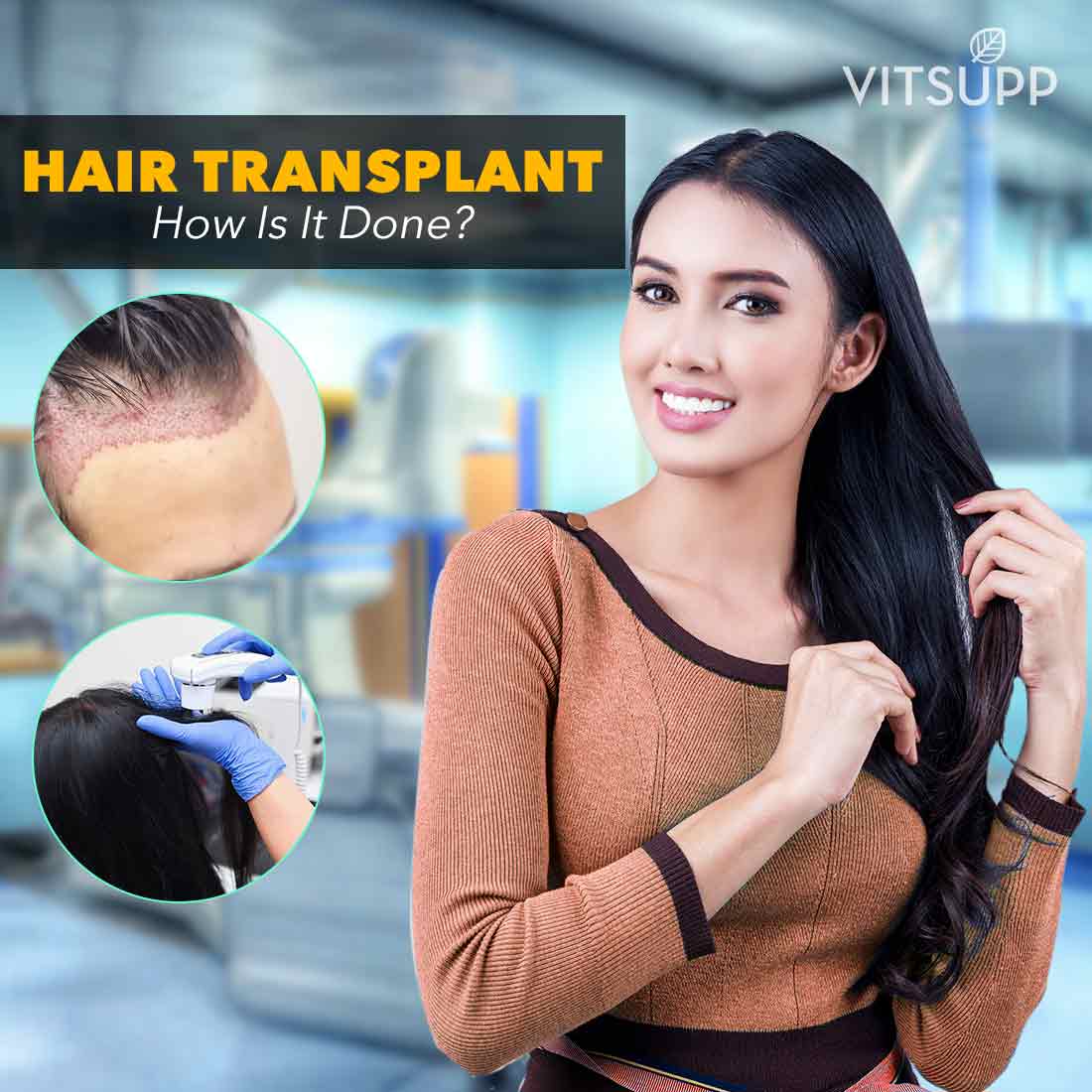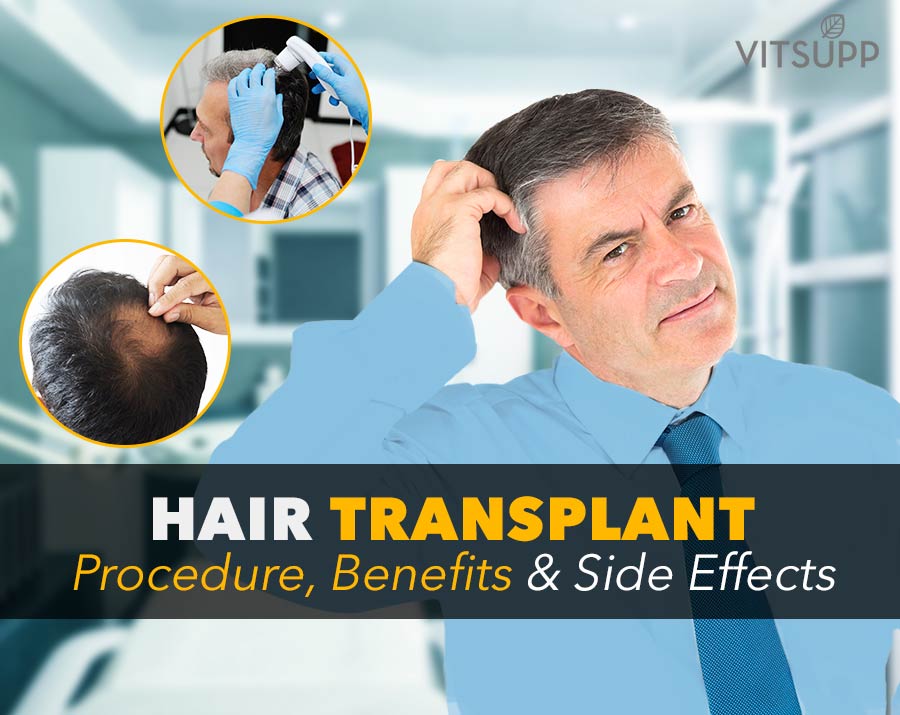Hair is no doubt the crowning glory of one’s personality. People oftentimes keep them preened and polished at all times, as a good hair day is a good day. With this said, hair loss is a disconcerting issue to have, that is why more and more people are thinking about hair transplant.
In earlier times hair thinning was linked to ageing but with an urban lifestyle and high levels of stress, it has now become a matter of concern for many. Sedentary lifestyle, poor nutrition, and pollution are a few reasons that cause hair thinning problems.
Watching a thick and healthy mane being replaced with a scanty and thinning one could be daunting for both men and women, of all ages.
To stave off the balding process, there are an array of hair restoration procedures which can help the affected, one of them being “Hair Transplant”. Apparently, this procedure can reverse the hair fall and bring back healthy hair. And, it is proven to be far more effective than over-the-counter products.
Contents
What is Hair Transplant?
Hair transplant is the process of grafting hair follicles into a balding part of the body. In this surgical technique, an expert removes hair follicles from one part of the body (donor site) and grafts it into a balding part of the body (the recipient site).
Though this helps in treating male pattern baldness, it can also be used to restore chest hair, eyelashes, eyebrows, beard hair etc.
Hair Transplant can help to alter hairlines and lives. Apart from bringing back healthy hair, it can even improve one’s appearance thus, confidence.
Is hair transplant painful procedure
Hair Transplant can prove to be a boon for people battling baldness. It is a relatively simple and painless procedure, which can be finished in a day’s time.
Is hair transplant successful
The very first Hair Transplant procedure was performed in Japan in the year 1939 using single scalp hairs. With advancement over the years, the process has evolved and become much simpler than before.
It is a surgical process in which the surgeon removes hair follicles from various parts of the body such as legs and arms and plants them on the bald areas of the scalp.
Unlike other organ transplant procedures, this process uses one’s own hair and no external donor is required.

How is Hair Transplant done?
The patient’s scalp is sterilized and then made numb using an anaesthetic. And, the majority of the patients stay awake during the transplant procedure.
The procedure itself doesn’t take long but the prime concern is to plant the hair in such a way that the texture and placement match the growing hair and doesn’t end up look like a wig.
A perfect combination of science and art, the planted hair should mimic the natural hair else it appears to be a halfhearted attempt to disguise baldness.
It may take anything between 4 to 8 hours to finish.
The procedure may sound gruesome but the truth is most of the patients may not experience any pain, rather, just slight discomfort.
If need be, sometimes patients are given mild sedatives on request to stay asleep during the hair transplant procedure. (1)

How does hair transplant work
There are usually two types of surgical procedures which are adopted: FUT & FUE
-
Follicular unit transplantation (FUT)
Sometimes referred to as Follicular unit strip surgery (FUSS), it is a highly advanced hair transplant procedure, which is a perfect option for those who have large bald areas on the scalp.
The surgeon examines the head of the patient and identifies the area where the hair growth is thick. An entire strip of hair, which is usually 6 to 10 inches long, is removed from the donor site at the back of the head.
Doctors then stitch back the removed scalp area and divide the scalp strip into several smaller strips using a scalpel. These scalp strips are called grafts and they contain hair follicles.
Doctors make small punctures in the places where hair growth is scarce, these are also known as “recipient areas”. The follicular unit grafts are then inserted in the punctured places and covered with gauze and bandages for healing. This procedure gives natural results and leaves no scars. (2)
-
Follicular unit extraction (FUE)
Hair transplant procedures in which the back of the head is shaved off and individual follicular units of healthy hair are extracted, one by one. The next step involves punching the scalp in targeted areas and grafting the hair follicles in the holes. The hair growth pattern post this procedure is natural and doesn’t give telltale signs of surgery. (3)
Is Hair Transplant permanent solution?
It is natural to wonder whether or not it gives lifetime results.
The answer to this is a resounding yes by most of the people who have undergone the same. Once you finish the hair transplant procedure, the transplanted hair will behave like natural hair.
They will shed after a month of transplant, but you can expect this to be a temporary phase. Thereafter, the roots will begin to sprout hair and will grow as long as the person lives. New hair cropped up within a few months after the surgical procedure will be voluminous and healthy.
It is highly unlikely the patient will once again face baldness. It is because the transplanted hair is inert to the DHT hormone, which caused baldness in the first place. This is particularly the reason because of which transplants are becoming a rage these days.
Is Hair Transplant safe and permanent?
Every surgery comes with some potential risks and complications; transplants too involved some risks such as infection and inflammation.
In most cases, these issues are temporary and the symptoms can be eased out using antibiotics recommended by the doctor.
What are the side effects of hair transplant
Let’s go in detail about the various complications that could take place in a hair transplant –
- Infection – Sometimes, if the surgery goes wrong, the scalp can get infected. This happens if the health workers do not maintain cleanliness, or there is a lapse in hygiene during the operation. It can also take place if the scalp forms an excess of crust.
- Bleeding – In some cases, the scalp might begin to bleed. This happens in rare cases, a few minutes after the surgery. Applying pressure with a clean gauze usually stops the bleeding.
- Itching sensation – Usually, an itching sensation after a hair transplant is a sign of healing. However, sometimes, it might be due to certain medications. Talk to your doctor about this.
- The unnatural appearance of hair – The transplanted hair usually falls off, after which, there is new hair growth. Sometimes, due to the graft preparation gone wrong, a poorly planned design of the hairline, or an error in the angulation of the hair grafts, it might result in the hair looking unnatural.
- Shock loss – This is a temporary complication. Shock loss refers to the sudden loss of hair. It is your body’s reaction to scalp trauma. You can experience hair growth after a shock loss after a period of time.
- Lack of sensation – Mostly, you will experience a lack of sensation or numbness after a hair transplant. This is an effect of the local anaesthesia.
- Crust formation – Crust formation on a scalp is a perfectly normal thing. It takes place two or three days after the hair transplant procedure, and anywhere between a week or ten days, the crusts usually fall off. If it does not, then you will have to consult your doctor.
- Swelling – This is another complication that takes place after a hair transplant. While a little bit of swelling for a day or two is normal, anything more than that can be a cause for concern.
- Bruises near the eyes – Bruises near the eyes or oedema is another side effect of hair transplants. It might take place two to six days after the hair transplant procedure.
- Folliculitis – This is a condition of the scalp, where the hair follicles an inflammation. Studies show that trauma or infection may lead to Folliculitis. (4)
Is FUE hair transplant painful?
Although hair transplant is an outpatient procedure, at the end of the day it is a surgical treatment that lasts anywhere from four to eight hours.
Essentially, it involves the removal of hair from one part of the scalp where hair does grow well and inserting it into the region of the scalp where hair growth is minimal.
At the most basic level, this is what hair transplant is.
Before the procedure, doctors administer a local anaesthetic to the patient.
At the start of the procedure, it is normal to experience a mild pricking sensation, that is not painful.
Once the effects of the local anaesthesia kick in, you will not experience any sensation, as the anaesthesia numbs the area.
Is FUE hair transplant safe
In a Follicular unit transplantation procedure, the pain is slightly more, compared to a Follicular unit extraction.
This is because in the Follicular unit transplantation procedure, usually, doctors extract a strip of the scalp or hair follicles and then stitch it to the part of the scalp where hair growth is less.
However, in a Follicular unit extraction procedure, doctors extract the hair follicles from the healthier part of the scalp with the help of punches. In fact, the pain tends to be lesser if the punches are lower as well.
Generally, a hair transplant is a painless procedure. After the treatment, and during recovery, in most cases, the patient might experience soreness in the scalp and mild pain.
This, however, lasts only for a few days. The doctors may give you anti-inflammatory or pain-relieving medications to deal with this. Hair transplants will not affect your return to work or normal activity.
At the most, you can take a day or two off from work and vigorous activity, but no more than this. (5)
Can Hair Transplants cause death?
Hair Transplants can restore one’s receding hairline and improve people’s appearance and self-esteem but certainly not at the cost of their lives.
So if your question is can hair transplant lead to death, then the answer is NO.
There have been some cases in which the patient lost their life during the surgery. Let’s examine if it is wise to undergo this process or not.
Because of the 100% success rate of the procedure, there is a surge in Hair Transplant clinics all around the world. But, the transplant procedure isn’t as straightforward as it appears to be.
A simple process can cause a horrific ordeal if not performed carefully. In most of such cases, unqualified doctors conducted the procedure. And, the patients suffered infection because of medical negligence.
One should understand the process and all the parameters before choosing to decide on any clinic.
Furthermore, it is imperative to check the authenticity of the clinic by carefully going through the client testimonials and if possible, the before and after pictures of ex-patients should also be examined.
It is not enough to just go through the recommendations and one must always check and verify the doctor’s credentials. Preferably, always opt for an experienced and dedicated doctor.
How much Hair Transplant cost in India?
In earlier times, people considered hair transplant sceptically and saw it as an expensive procedure. However, the truth is, hair transplant cost in India is relatively low and varies from location to location.
Generally, the price depends upon the extent of hair loss. The cost of the surgery is directly proportional to the number of grafts you need to restore the hair.
A hair transplant will typically cost anything between INR 25,000/- to INR 1,00,000/- excluding the medicines and the initial consultation. But, only a comprehensive hair and scalp consultation can reveal the total cost of the treatment.
Dos and Don’ts before hair transplant
Apart from what the doctors tell you, you should keep certain things in mind before the hair transplant. We have listed them below:
Dos before a hair transplant
- In most cases, doctors recommend that you wash your hair on the morning of the hair transplant procedure. This is to keep the scalp clean and free from any dirt and accumulation, which might cause an infection.
- Your hair and scalp will be at a delicate state after the surgery, and it is best not to expose it to any friction. So, where the kind of clothes that when removed, won’t have to be pulled or tugged over your head. This might interfere with the scalp and hair that is extremely tender.
- The doctor will give you a dose of local anaesthesia during the procedure. So, it is best for you to arrange a source of transportation to your way back home. It is also a good idea to have someone accompany you during and after the procedure.
Don’ts before a hair transplant
- You need to avoid consuming anti-inflammatory drugs or aspirin seven to ten days before the hair transplant procedure. Ask your doctor for the medications that you need to stay away from before the hair transplant procedure. This might include certain supplements and Vitamin B and E tablets as well.
- Make sure you do not consume alcohol for an entire week before the hair transplant procedure. This is because alcohol can weaken your immune system and interfere with the process of healing. Alcohol can also negatively react with certain medications which the doctor give you before, during, or after the hair transplant procedure.
- Cigarettes can have the same effect as well. Do not smoke around three to four days prior to the day of the hair transplant procedure. Additionally, you will have to steer clear of cigarettes for three to four days after the hair transplant surgery as well.
Dos and Don’ts after hair transplant
The newly implanted hair requires some care after the process as they are still tender and need some nurturing before taking root. Here is a list of Dos and Don’ts that you should follow:
Dos after a hair transplant
- Remember all the instructions and guidelines given by the doctor to avoid any mishaps. Follow all the instructions clearly, and don’t take any of it lightly.
- Try to keep the scalp dry after one day of the surgery as it promotes healing. Avoid going to the gym or engaging in activities that can make you sweat excessively on the scalp.
- Wash hair using only a mild shampoo and be very gentle while shampooing. You can ask your doctor for a recommendation.
- Do hydrate well. Drink a lot of water and fluids to keep your body well-hydrated.
Don’ts after a hair transplant
- Avoid touching or scratching the scalp as it may cause inflammation and cause the hair grafts to fall out.
- Abstain from drinking and smoking for at least a month after the procedure, as it disrupts the flow of blood in the hair follicles.
- Avoid anything that could cause excessive sweating. Sweating may increase the chances of catching an infection. However, it is fine to exercise after 10 days from the procedure.
In Conclusion
Hair transplant surgery can be a life-changing step for anyone. Though a non-invasive procedure, the hair transplant process has its own risks involved. This treatment can only cure male pattern baldness and cannot prevent it.
It is best to weigh the pros and cons and ensure the pros outweigh the cons before starting the process. If done properly, you can see noticeable and satisfactory hair growth patient within the span of 8-9 months. A hair-friendly diet and some Ayurveda tips too can give better results.
FAQ’s
Q1 what is the cost of hair transplant in india?
It will typically cost anything between INR 25,000/- to INR 1,00,000/- excluding the medicines and the initial consultation. But, only a comprehensive hair and scalp consultation can reveal the total cost of the treatment.
Q2 Is hair transplant successful in India?
Yes, The transplantation of hair has almost 100% success rate in India. But, the transplant procedure isn’t as straightforward as it appears to be.
A simple process can cause a horrific ordeal if not performed carefully. In most of such cases, unqualified doctors conducted the procedure. And, the patients suffered infection because of medical negligence.
One should understand the process and all the parameters before choosing to decide on any clinic.
Furthermore, it is imperative to check the authenticity of the clinic by carefully going through the client testimonials and if possible, the before and after pictures of ex-patients should also be examined.
Q3 Can transplanted hair grow long?
Yes, transplanted hais can grow long.



Nice